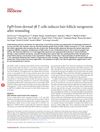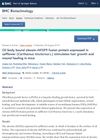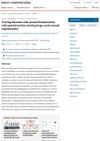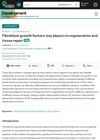Regulation of Receptor Binding Specificity of FGF9 by an Autoinhibitory Homodimerization
July 2017
in “
Structure
”
Fibroblast Growth Factor 9 FGF9 receptor binding specificity autoinhibitory homodimerization FGFR1c FGFR2c FGFR3c D195A substitution hydrophobic interactions water-mediated hydrogen bonds Pfeiffer craniosynostosis syndrome multiple synostosis syndrome receptor binding homodimerization D195A mutation hydrogen bonds Pfeiffer syndrome synostosis syndrome
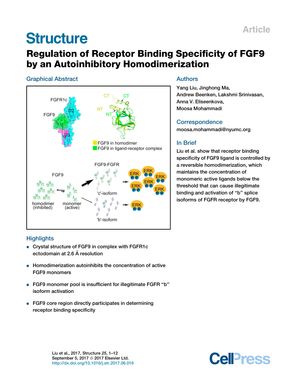
TLDR FGF9 controls which receptors it binds to through a process where two FGF9 molecules join, and changes in FGF9 can lead to incorrect receptor activation.
The document presents a study on the regulation of receptor binding specificity of Fibroblast Growth Factor 9 (FGF9) through an autoinhibitory homodimerization mechanism. The study provides evidence from X-ray crystallography, biophysical, and biochemical analyses that homodimerization of FGF9 controls its receptor binding specificity. This mechanism maintains the concentration of active FGF9 monomers at a level sufficient for normal FGFR "c" isoform binding and signaling, but insufficient for illegitimate FGFR "b" isoform binding and signaling. Alterations in the N or C terminus of FGF9 can disrupt this balance, leading to off-target binding and activation of FGFR "b" isoforms. The study also found that a single D195A substitution in FGF9 reduces its dimerization but not its binding affinity to FGFR1c, and that the mutated FGF9 forms more complexes with FGFR1c than the wild-type. Additionally, specific hydrophobic interactions and water-mediated hydrogen bonds between FGF9 and FGFR1c contribute to the higher affinity of FGF9 for FGFR1c and FGFR2c isoforms compared to FGFR3c. Mutations in FGFR1c and FGF9 can significantly affect binding affinity and specificity, with implications for diseases such as Pfeiffer craniosynostosis syndrome and multiple synostosis syndrome. The study provides insights into the structural basis for FGF9's receptor binding specificity and the regulatory role of ligand homodimerization.
